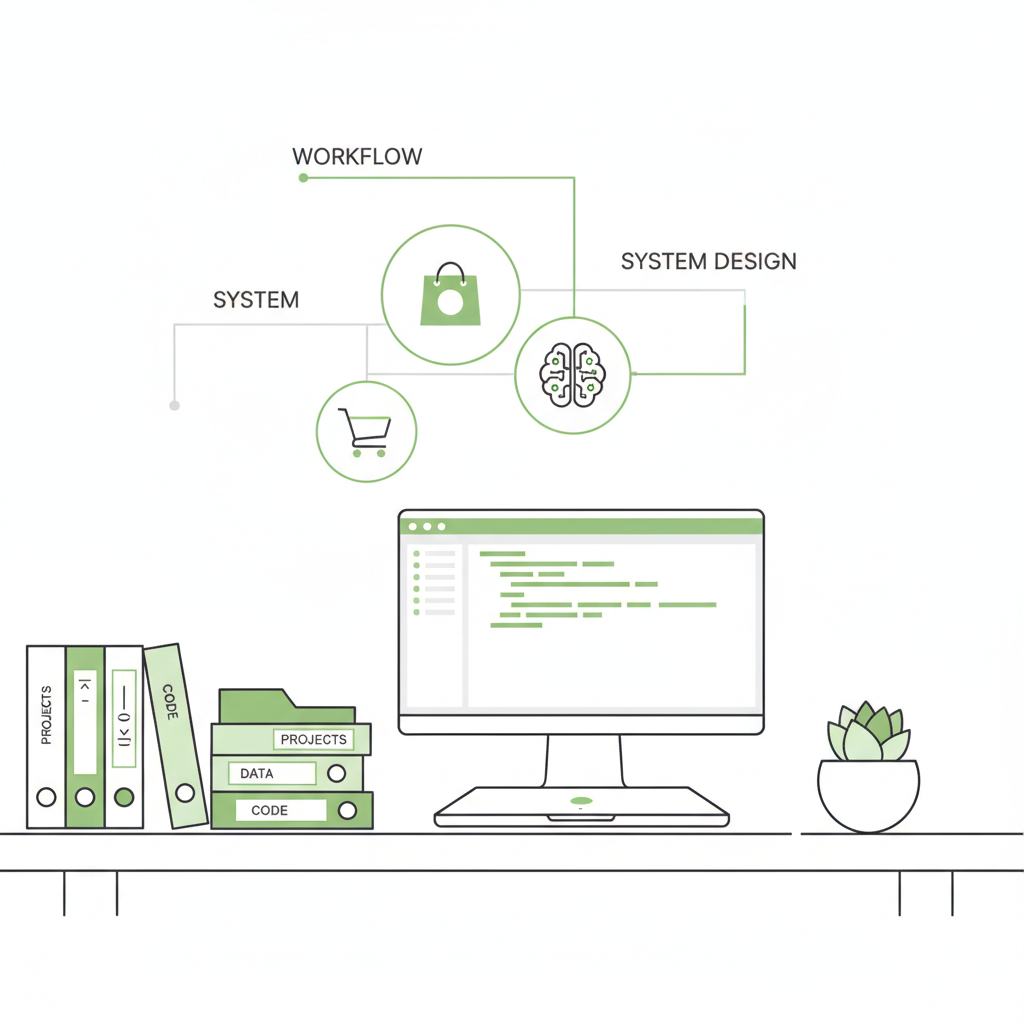What is CRO or Conversion Rate Optimization?
TLDR: It’s a series of A/B Testing made over diverse elements and features on your website, that allows merchants to know their customer’s preferences. Wrap your mind on price testing, colors, figures, sections, etc.
Picture this: You’ve set up a beautiful Shopify store, your products are top-notch, and you’re ready to take the e-commerce world by storm. But wait! Your site traffic is high, yet sales are lower than expected. What gives? Enter Conversion Rate Optimization or CRO, so you turn the window shoppers into actual buyers.
CRO is all about fine-tuning your website to make it irresistible. Think of it as the ultimate makeover show for your online store, where every tweak and twist is designed to boost your sales. From streamlining the checkout process to making those “Buy Now” buttons as inviting as a slice of cake on a diet. CRO ensures that your visitors don’t just browse, they buy!
In the wild world of e-commerce, where competition is fierce and attention spans are shorter than TikTok dancing, CRO is the answer you’re looking for. It helps you understand what makes your customers tick and smooths out any hiccups in their shopping journey. The result? Happier customers, more sales, and a store that runs like a well-oiled machine.
At least, in my own words, this is what I’ve learned working for a company that master this subject as DTC Pages. It’s been several years contributing to CRO Experiments and I’ve seen firsthand how small or big experiments impact sales and revenue for their merchants and clients. Side by side with amazing CRO experts (Victor Paytuvi and Harry Mollineux), it’s been a breathtaking journey guys, thanks.
Now… What does it have to do with the Web Components here?
What Are Web Components?
TLDR: Web Components are a set of web platform APIs that allow you to create new, custom, reusable, and encapsulated HTML tags to use in web pages and web apps. Imagine them as LEGO blocks for web development. You can build anything from simple buttons to complex interactive features, and they all fit together perfectly.
Alright, let’s dive into the world of Web Components. Think of them as the secret ingredients in your web development recipe that make everything taste just right.
- Custom Elements:
Custom Elements are the main thing about the Web Components. They let you define your own HTML tags and encapsulate their content, complete with custom behavior and styling. For example, would you like your HTML tag to look like <my-own-custom-component>…</my-own-custom-component>? - Shadow DOM:
Now, the Shadow DOM is where things get really cool. It’s like giving each of your custom elements their own personal bodyguard. It encapsulates the internal structure of the element, keeping it separate from the rest of your page. This means no more style or script conflicts—your custom elements can do their thing without worrying about the outside world. As a developer, I’ve suffered a lot with CSS overwriting other elements by mistake. Or just something so simple like astopPropagation()misplaced elsewhere. - HTML Templates
HTML Templates are the unsung heroes in this trio. They allow you to define chunks of non-rendered HTML that can be cloned and inserted into the DOM as needed to be rendered. Think of them as cookie cutters for your content, letting you stamp out as many copies as you need without writing the same code over and over.
How Web Components Work in a Modern Web Development Context?…
Like a dream. They’re built to work with any JavaScript framework you might be using, whether it’s React, Angular, or Vue. This means you can create these neat, reusable components once and use them anywhere, making your development process more efficient and your codebase cleaner.
Web Components are also fantastic for performance. By encapsulating and reusing components, you reduce redundancy and streamline your site’s operations, which means faster load times and happier users.
In short, Web Components are the ultimate tool for creating modular, maintainable, and high-performance web applications. They let you build custom features that look great and work flawlessly, all while playing nicely with the rest of your code (Like LEGO Blocks!).
Advantages of Using Web Components in CRO Experiments
- 💊 Encapsulation and Reusability
- Encapsulation: Think of Web Components as little islands, each with its own set of rules, functionality, and styles. This encapsulation ensures that whatever happens inside a component stays inside the component (someone said “Like in Vegas”, but I don’t think so (The Vegas part, I mean 😅*))*. This way, you can run multiple experiments without your CSS throwing a tantrum and causing conflicts.
- Reusability: With Web Components, you’re not just creating one-off solutions. You’re building a library of components that you can use again and again. Need a fancy button for your new experiment? Just grab the one you’ve already perfected. This saves time, reduces errors, and keeps your experiments consistent across the board.
- ⚙️ Improved Performance
- Page Load Times: Web Components help your site load faster by cutting down on redundant code.
- Shadow DOM: This isolation means each component renders optimally, leading to smoother performance and a better user experience.
- 🙏🏻 Ease of Integration
- Seamless Integration: Whether you’re team React, Angular, or Vue, Web Components are the social butterflies of the development world. They mingle effortlessly with any framework or library, fitting right in without causing issues. This means you can introduce them into your existing projects without having to rewrite everything from scratch.
- Compatibility: Web Components play nice with all kinds of web technologies, making them the versatile tools you didn’t know you needed. They can be slotted into any project, big or small, and work seamlessly to enhance your CRO efforts.
- 🔧 Maintainability
- Clean and Maintainable Code: By breaking down your UI into modular components, Web Components promote cleaner, more organized code. It’s like tidying up a cluttered room. You know exactly where everything is, making it easier to find and fix issues. This is especially useful for big CRO teams where everyone is throwing code constantly on the website.
- Simplified Updates and Testing: When each part of your interface is a self-contained module, updating and testing become a breeze. You can tweak a component here, and test a feature there, all without worrying about unintended side effects elsewhere. This modularity leads to more efficient CRO experimentation, letting you focus on optimizing your site rather than untangling messy code.
- 👤 Enhanced User Experience
- Consistency and Polish: Web Components help you deliver a consistent, polished user experience. It’s like having a personal stylist for your website, ensuring every element looks good and works perfectly together. This consistency boosts user confidence and can significantly enhance engagement and conversion rates.
- Custom, Interactive Elements: With the power to create custom, interactive components, you can craft unique user experiences that captivate and convert. Whether it’s an interactive product slider or a dynamic review section, Web Components lets you add that extra sparkle to your site, keeping users engaged and more likely to complete a purchase.
With these advantages in your toolkit, Web Components become the ultimate allies in your CRO experiments. They streamline development, enhance performance, and elevate the user experience, making your e-commerce site not just functional, but fantastic.
Best Practices for Implementing Web Components in CRO for Shopify Stores
- Keep It Simple 🎯
- Start with a clear goal for each component. Make sure it does one thing and does it well. Avoid cramming too much functionality into a single component.
- Use Descriptive Names 🏷️
- Name your custom elements clearly and descriptively. This makes it easier for you and your team to understand and use them. For example, <custom-button> is much more intuitive than
<cb-1>. There are some rules for using Web Components, and one of them is to use 2 words or more separated by-. That’s critical, please don’t ignore it and create components with more than two words.
- Name your custom elements clearly and descriptively. This makes it easier for you and your team to understand and use them. For example, <custom-button> is much more intuitive than
- Encapsulate Styles and Behaviors 🎨
- Leverage Shadow DOM to encapsulate styles and behaviors. This prevents conflicts with the rest of your page and ensures your components look and act the same everywhere.
- Reuse and Refactor 🔄
- Build reusable components and refactor them as needed. If you find yourself copying code, it’s time to create a component. This saves time and ensures consistency across your site.
- Optimize Performance 🚀
- Minimize the use of heavy libraries within your components. Optimize your code and assets to keep your components light and fast.
- Pass Liquid parameters as custom attributes 🧲
- When working with Shopify and its Liquid template system, it’s essential to build our components with custom attributes that can be passed as parameters. These attributes enable you to pass necessary information seamlessly into the internal component. Additionally, you can utilize the
<template>HTML tag to define the structure you need. This template can then be referenced within the component and rendered during theconnectedCallbacklifecycle method.
- When working with Shopify and its Liquid template system, it’s essential to build our components with custom attributes that can be passed as parameters. These attributes enable you to pass necessary information seamlessly into the internal component. Additionally, you can utilize the
Strategies for Integrating Web Components into Existing CRO Workflows
- Start Small
- Begin by integrating a few key components into your existing workflows. Test and measure their impact before scaling up.
- Collaborate with Your Team 🤝
- Work closely with your designers and other developers. Ensure that everyone understands the purpose and usage of the Web Components to maintain a cohesive workflow.
- Document Everything 📝
- Maintain thorough documentation for each component. This includes usage instructions, examples, and any dependencies. Good documentation helps your team utilize components effectively.
- Version Control 📌
- Use version control for your components. Track changes and maintain different versions to ensure compatibility and easy rollbacks if needed. I like to use a Git Repo where I store them all (you might say “monorepo?”, but it shouldn’t be that hard, actually). You just need to have an
index.htmlfile at the root folder/repo, and among it, have a folder calledcomponents. I recommend, at this point in my career, having a subfolder for each module or component you will have in the future, in order to have multiplenpmpackages as needed. Trust me, the Web Components are so powerful, that in the future you will start using them.
- Use version control for your components. Track changes and maintain different versions to ensure compatibility and easy rollbacks if needed. I like to use a Git Repo where I store them all (you might say “monorepo?”, but it shouldn’t be that hard, actually). You just need to have an
- Continuous Testing 🧪
- Regularly test your components across different browsers and devices. Automated testing tools can help you catch issues early and ensure a smooth user experience. Bringing my last advice in the previous paragraph, having a folder with an
index.htmlfile where you can import all your components, centralized and reachable, will allow you to implement E2E, Unit, and Integration Testing.
- Regularly test your components across different browsers and devices. Automated testing tools can help you catch issues early and ensure a smooth user experience. Bringing my last advice in the previous paragraph, having a folder with an
Common Pitfalls to Avoid and Solutions to Common Challenges
- Overcomplicating Components 🚫
- Solution: Stick to the principle of single responsibility. Break down complex components into smaller, more manageable pieces, then combine them as needed.
- Ignoring Browser Compatibility 🌐
- Solution: Test your components in all major browsers. Use polyfills for features not supported in older browsers to ensure a consistent experience. As the most important and useful tool I’ve used throughout my career, I can talk about Browserstack. I’m not receiving any share for this advice, but it is the most impressive and useful testing tool I’ve used to test multi-browser and multi-device compatibility.
- Poor Performance 🐢
- Solution: Optimize your components by lazy loading resources and minimizing dependencies. Use performance monitoring tools to identify and address bottlenecks.
- Lack of Documentation
- Solution: Invest time in creating comprehensive documentation. Include clear examples and usage guidelines to help your team implement components correctly. You may use
readme.mdfiles, and code commenting as much as you can. Also, if the company you work for has any documentation system, be clear and document it.
- Solution: Invest time in creating comprehensive documentation. Include clear examples and usage guidelines to help your team implement components correctly. You may use
- Not Using Version Control ❌
- Solution: Always use version control for your components. This helps manage updates and ensures you can revert to previous versions if necessary. Also, if you’re on a team, you will be able to use
git blame🤫. But, don’t be a 🐸.
- Solution: Always use version control for your components. This helps manage updates and ensures you can revert to previous versions if necessary. Also, if you’re on a team, you will be able to use
- Trying to access elements inside a Component from the outside
- TBH, the whole concept of using Web Components is encapsulating it and isolating it from the rest of the DOM. It’s the most important and useful part of it. If mandatory for you to use an element from outside, then don’t use a Web Component.
In this article, I’ve taken a deep dive into the world of Web Components and their transformative impact on Conversion Rate Optimization (CRO) experiments. By now, it should be clear that incorporating Web Components into your CRO strategies can significantly enhance your e-commerce site’s performance and user experience. They streamline development, boost efficiency, and provide a modular approach that makes maintenance a breeze.
So, why not give Web Components a try in your next CRO experiment or team? With their ability to create dynamic, reusable elements and improve overall site functionality, you’ll be well on your way to optimizing your e-commerce site for success.
If you’re eager to dive deeper into the world of Web Components and Conversion Rate Optimization, here are some excellent resources to get you started:
- MDN Web Docs on Web Components: MDN Web Components Guide
- WebDev: Introduction to Web Components
I’d love to hear from you! Have you tried using Web Components? What challenges and successes have you encountered? Share your experiences or ask any questions you might have. Let’s learn and grow together as we navigate the exciting world of web development and optimization.





